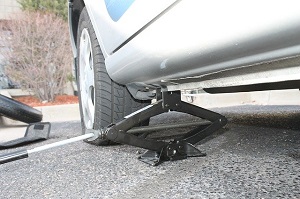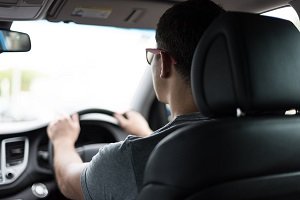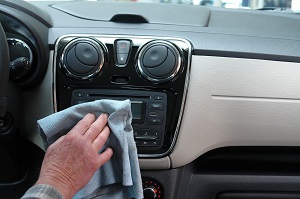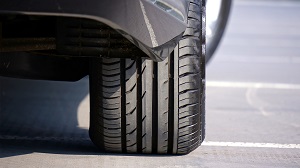Posted on 8/31/2020

Many new cars are now missing a spare tire and are coming from the factory equipped with tires or inflator kits that claim to make a spare tire unnecessary. We usually don’t think about the need for a spare tire until we need it. You should always have a spare tire in your vehicle because you never know when you’ll get a flat or puncture and be on the side of the road stranded. A spare tire and wheel provide you with a direct replacement, allowing you to become mobile again until you get a tire repair service. Many spare tires for modern cars are smaller than normal tires to save on trunk space, gas mileage, weight, and cost, and they should not be driven on for long before replacement with a full-size tire. Don't wait until you're on the side of the road to invest in a spare tire. If your vehicle doesn’t come equipped with a spare, purchase a spare tire so you can safely replace a damaged tire, and travel to your nearest auto repair shop for proper service. Types of Spare Tires A Ful ... read more
Posted on 8/13/2020

Your vehicle is a good way to maintain social distance compared to taking the bus, train or a taxi. If you are traveling in a vehicle with other people, you can still ensure that social distancing is being practiced by sitting at the far opposite side of the car (2m or 6 feet separation). You also need to consider how many people are in the cab, perhaps using a larger vehicle to provide more distance between occupants and always ensure good ventilation by keeping windows open where possible. Social distancing simply means keeping a safe distance away from other people and includes measures such as not shaking hands and staying about 6 feet away from other people. In your vehicle, staying 6 feet apart is difficult, but there are other preventative measures you can take. There should also be routine cleaning and disinfection of frequently touched objects and surfaces such as door handles, steering wheels, and controls. Of course wearing a mask may also be a good idea. Social Distancing ... read more
Posted on 7/17/2020

Your tires are your car's only connection to the road. Taking care of your tires will save you money on gas and a smoother, safer ride for you and your family. Your vehicle’s tires affect how your vehicle steers, how it brakes, and how it hugs the road. Your tires need to have the correct air pressure, tread depth, tire balance, and wheel alignment to be safe and cost-effective. If your car is left unused for an extended period of time, know that your tires and other components will still require maintenance and upkeep. Leaving a car unused for a long period could leave it vulnerable to problems with your battery, brakes, and tires. Tires will be prone to deteriorate, lose air pressure, and develop flat spots. When you decide to start driving your vehicle again, instead of the smooth ride you expected, it will be all bumps, thumps, and vibration due to ineffective tires. Here Is What Happens to Tires When a Vehicle Is Left Unused Tire Deterioration Although you will ... read more
Posted on 7/17/2020

Germs and dirty surfaces can make you cringe on the thought of touching or sitting in an area filled with it. Well, fun fact, your car probably isn’t the pristine haven you think it is. According to studies, the average steering wheel is four times dirtier than a public toilet seat. Then they are all the other frequently touched areas in your cars such as the cup holder, seat belts, and door handles, and touch pads; they can’t be too much cleaner. Now more than ever, it seems timely to offer some tips on how to safely sanitize your vehicle. Sanitizing your car is different than giving it a good spring cleaning. It’s essential to keep germs and viruses off the parts of your car you touch the most. We’ve all been doing a lot of washing and cleaning lately, and cleaning our car probably hasn’t been one of those places. Many people spend a lot of time in vehicles, so keeping it well sanitize and clean is important. In order to prevent the spread of viruses and other harmful germs, you’ll ... read more
Posted on 6/25/2020

Bubbles in your tires are generally caused by impacts on the road. Hitting the edges of potholes, small collisions, hitting a curb and speed bumps can all cause the sidewall to bulge in your tires. Your tires should always be smooth and round, so if you notice a bubble on the sidewall or see a section of tread bulging, it’s a sign that something is very wrong, and you should stop driving immediately. Tires that have a bubble are not safe to drive. When your tire has a bubble, the fabric of the inner tire can no longer protect your tire from bursting when pressure develops from contact with the road. The most common place to see a bubble in the tire is the sidewall. Tire bubbles can also form in areas where the rubber has worn very thin. Driving on a tire that has a bubble is very dangerous and there is a high possibility that it will blow out on you. Your top priority should be getting the tire replaced as soon as possible because as more moisture and air seeps in, the bubbles will ge ... read more